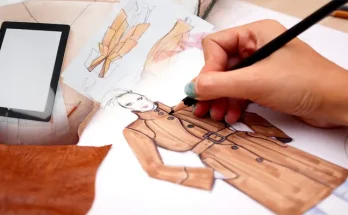Textile design has come a long way in recent years, primarily due to advancements in computer-aided design (CAD) software. These powerful tools have revolutionized the way designers create, edit, and visualize their textile designs, offering numerous benefits over traditional manual methods. In this article, we will delve into the proficient use of CAD software in textile design and explore the advantages it brings to the industry.
Enhanced Design Capabilities
One of the key advantages of CAD software in textile design is its ability to enhance the creative capabilities of designers. With a wide range of tools and features at their disposal, designers can effortlessly experiment with various patterns, colors, and textures, allowing them to bring their ideas to life more effectively than ever before.
CAD software also simplifies the process of creating and modifying textile designs. Designers can easily resize, rotate, mirror, or duplicate elements, making it quicker and more efficient to iterate through different design variations. This not only saves time but also enables designers to explore a larger number of design options, ultimately leading to more innovative and unique creations.
Improved Accuracy and Precision
Another significant advantage of using CAD software in textile design is the improved accuracy and precision it offers. Manual methods often involve the risk of human error, resulting in imperfect designs or costly mistakes in the manufacturing process. CAD software eliminates these risks by providing precise measurements and allowing designers to align and position elements with utmost accuracy.
The software’s grid-based approach ensures that designs are proportionate and symmetrical, achieving a higher level of precision in textile patterns. Additionally, CAD software enables designers to create intricate and complex designs that may be challenging to achieve manually, further expanding the creative possibilities in textile design.
Streamlined Workflow and Efficient Collaboration
CAD software not only simplifies the design process but also streamlines the overall workflow for textile designers. With CAD, designers can easily organize their design projects, create libraries of design elements, and store them for future use. This ensures easy accessibility and reduces the time wasted searching for specific designs or elements.
Furthermore, CAD software enables efficient collaboration between designers, artists, and manufacturers. Design files can be easily shared and modified by multiple individuals simultaneously, eliminating the need for physical prototypes or constant back-and-forth communication. This not only saves time but also ensures that everyone involved in the process is on the same page, resulting in a smoother and more efficient textile design workflow.
Integration with Manufacturing Processes
The proficient use of CAD software in textile design extends beyond the design phase and seamlessly integrates with the manufacturing process. CAD software allows designers to generate accurate specifications, including color codes, print layouts, and fabric details, which can be directly communicated to manufacturers for production.
This integration eliminates the need for manual data entry and minimizes errors during the transfer of design information. By providing comprehensive and precise documentation, CAD software ensures that the final manufactured products closely match the original design intent, leading to higher customer satisfaction and reduced manufacturing errors.
The proficient use of CAD software in textile design offers numerous benefits that contribute to a more efficient and innovative design process. From enhanced creative capabilities to improved accuracy and precision, CAD software empowers designers to create intricate and unique textile designs that were once challenging to achieve manually. With streamlined workflows and seamless integration with manufacturing processes, CAD software is becoming an indispensable tool in the textile design industry, revolutionizing the way designers bring their ideas to life.





